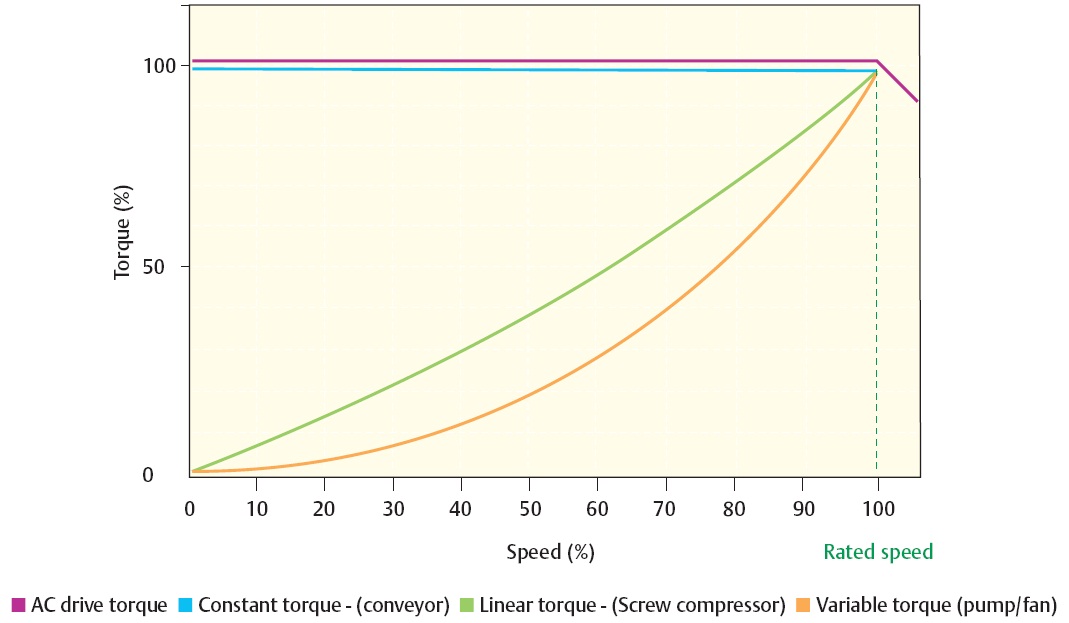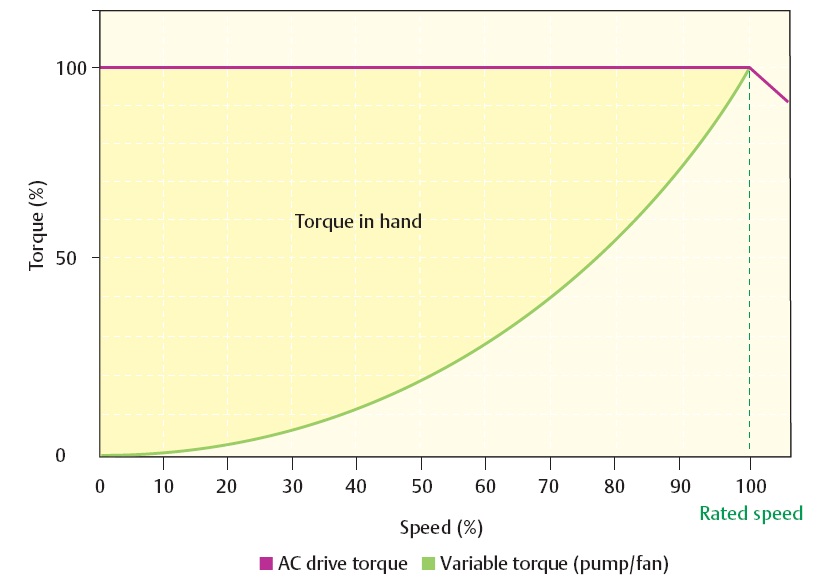How Variable Speed Drives Save Energy?
How Variable Speed Drives Save Energy?
Most motors are designed to rotate at a set speed based on the number of magnetic poles built into them and the supply voltage and frequency applied. They cannot alter their speed. Even for fixed speed systems, it can be difficult to find a motor that rotates at the correct speed for its designated application. Therefore, extra parts such as gears, dampers or variable speed drives are often required.
Variable speed drives provide effective speed control of AC motors by manipulating voltage and frequency. Controlling the speed of a motor provides users with improved process control, reduced wear on machines, increased power factor and large energy savings.
Most applications can be grouped into the following torque categories:
- Constant torque load applications such as conveyors often require a starting torque close to the rated torque of the motor, and show only small changes as they approach rated speed
- Linear torque load applications such as screw compressors have a more linear torque requirement that increases proportionately with speed
- Variable torque load applications like fans and pumps have torque requirements that increase in proportion to the square of the speed and reach 100% torque just below rated speed
The most significant energy savings can be achieved in applications with a variable torque load. The cube law relationship between speed and power means that reducing a fan’s speed in a variable torque load application by 20% can achieve energy savings of 50%. Therefore, for most motion control applications, reducing motor speed is often the easiest way to get large energy savings.
Square law fluxing
Altering the speed of variable torque loads can yield power savings proportional to the speed reduction cubed. This is because power is a product of torque and speed, with variable torque loads having torque requirements that increase in proportion to the square of the speed. In linear voltage-frequency mode, AC drives can provide 100% torque up to rated motor speed. This means that, in variable torque applications, there is always plenty of spare torque capability available.
The square law manipulates the linear voltage to frequency relationship so that the torque capability in the stator windings of the motor is reduced, reducing losses.
Dynamic V to F mode
Dynamic V to F mode is designed for applications where power loss in the motor should be kept to a minimum under low load conditions. In this mode the drive will vary the voltage to frequency characteristic it applies to the motor depending on load level, so that at light load levels the voltage on the motor is reduced for a given frequency. This reduces the magnetizing current which reduces losses in the motor.


Comments
Post a Comment